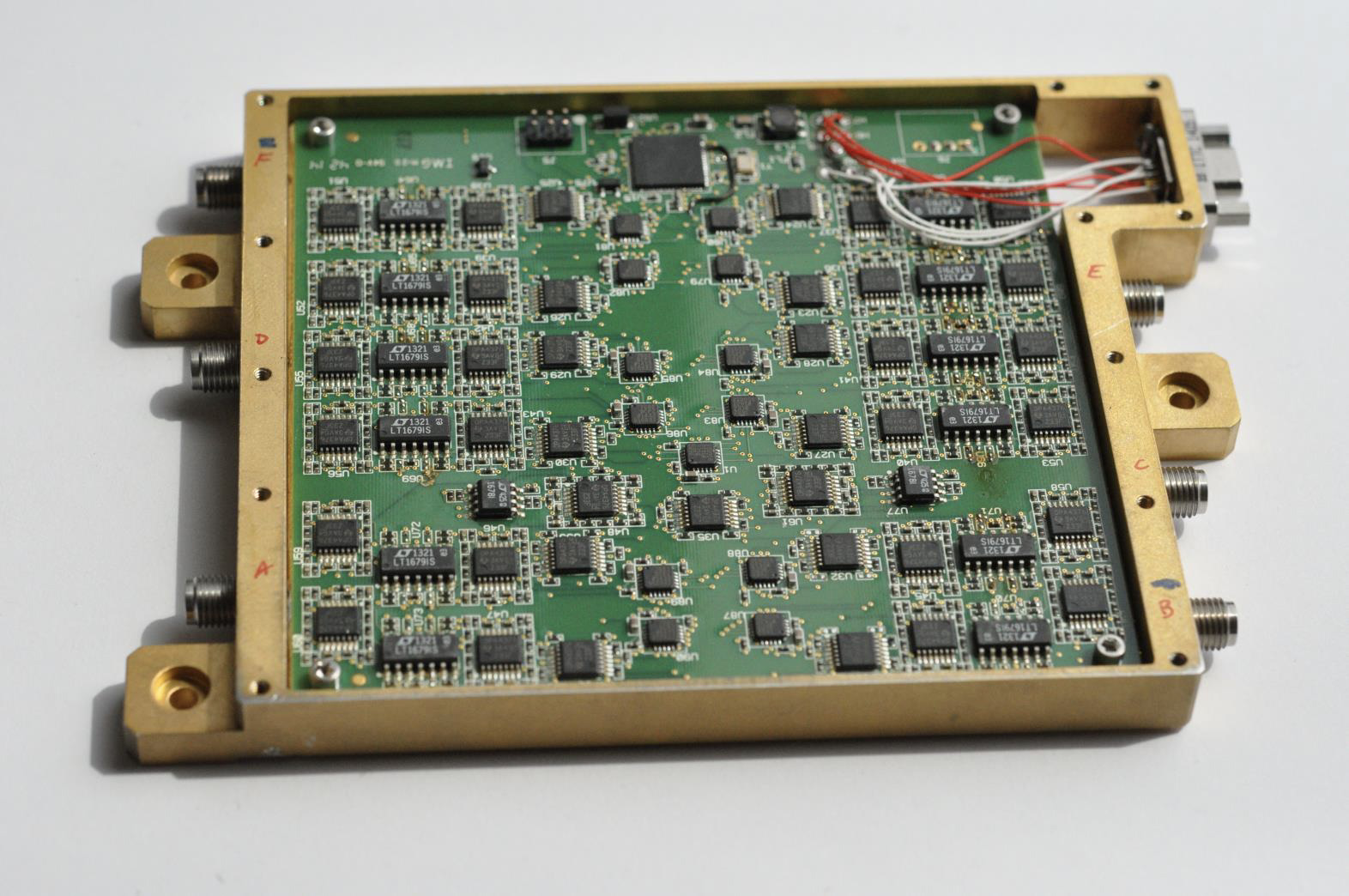Early Technology Developments for the TROPICS Mission
In May 2023, the TROPICS (Time-Resolved Observations of Precipitation structure and storm Intensity with a Constellation of Smallsats) mission successfully launched its first 3-unit CubeSats, part of a constellation to study the development of tropical cyclones. Arrayed in three orbital planes, the TROPICS satellites will use scanning microwave radiometers to measure temperature, humidity, precipitation, and cloud properties.

A mixed-signal printed circuit board for the intermediate frequency processor module developed as part of the ACT project (Image credit: W. Blackwell, MIT)
The TROPICS mission was made possible by significant ESTO-funded technology developments as well as precursor on-orbit demonstrations. A 2010 Advanced Component Technology (ACT) project at MIT Lincoln Laboratory developed and demonstrated a new hyperspectral microwave receiver subsystem to support atmospheric sounding missions like TROPICS. A key technology in that effort was an ultra-compact, nine-channel intermediate frequency processor (IFP) module. Weighing about 500 grams and requiring less than 100 cubic centimeters, the IFP enabled much smaller instruments – at the time more than 10-times smaller – and opened opportunities for lowered launch costs and new observation scenarios.
Each of the CubeSats in the TROPICS constellation contains a high-performance radiometer based on this early technology work. Working together, the CubeSats comprise an observing system that offers an unprecedented combination of horizontal and temporal resolution for the measurement of tropical cyclones at a nearly global scale. The TROPICS mission is also helping to demonstrate that constellations can provide an affordable, reconfigurable solution for Earth remote sensing.
The ACT microwave receiver technology has also been infused into several other projects, including the ESTO-funded Microwave Radiometer Technology Acceleration (MiRaTA) CubeSat, launched in November 2017, and the NOAA-funded Microsized Microwave Atmospheric Satellite Version 2a (MicroMAS-2a) CubeSat, launched in January 2018. Although the MiRaTA CubeSat bus experienced radio failure early in its mission, both demonstrations helped inform the design and development of TROPICS.